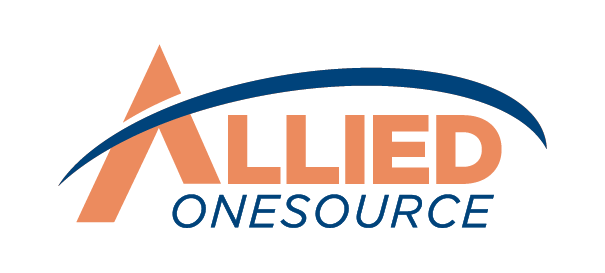10 Things Every Tech Professional Should Include in their Resume
When you browse the job market, you might see different roles and job titles aligned with your career goals. Even so, applying to these open positions doesn't always result in interviews or working opportunities.
In your search for a tech job, how can you improve your chances and stand out among other candidates? The key is to develop the resumes you submit.
Your Tool for Introductions
As a professional looking for the next step in your career, resumes serve as your profile. It's the first tool you can use to introduce yourself to the companies you're interested in working with. It's common knowledge that a resume sums up your personal and professional background. Think of it as an instrument you can use to market yourself to potential employers.
Read More: 5 Tips for Writing a Great Resume
10 Things Tech Professionals Should Have in Their Resume
Since it's the first time companies are hearing about you, your resume needs to be two things: complete and convincing.
Read More: Crafting an Outstanding Resume - 11 Tips for Job Seekers
Even after you've been selected to move on to the interview process, your resume will still be the basis for many questions and talking points. You must ensure the file you've submitted details everything about you as a professional. Your ultimate goal is to convince hiring managers that you're the right fit for the role.
Consider including these ten things in your resume:
1. A Striking Header
Since a resume is used to market yourself, you must present your brand from the start. How? You need to create a striking header using the top section of your resume. This is the first thing employers see, so make a solid first impression while also providing your basic information. Don't forget to include your full name and contact details.
You can also add the professional title you're aiming for. This would help hiring personnel be acquainted with you. The contact details also allow employers to reach out when needed quickly.
2. An Objective Statement
An objective statement is one of the best ways to set the tone for your application. Give a summary outlining your career goals and a statement clearly stating what you can bring to the table.
Introduce yourself by explaining your aspirations and skills. Who are you, and what can you contribute to the company's success? For example, "Dedicated software engineer passionate about creating innovative solutions and optimizing overall user experience."
However, according to 2023 research, only 37 percent of recruiters seek a resume objective.¹ So, to meet their preference while also considering the other 63 percent, it's best to make your objective statement short and sweet.
Write only one or two sentences that prove you're the right fit for the position. Avoid including too many details that would be repeated in other parts of your resume.
3. Professional Experience
Employers and hiring leaders want someone who can do the job. You can do just that in this part of the resume by listing your relevant professional experiences.
Dive into your work history and emphasize your previous roles and responsibilities. Remember that every company has different working structures. Take the time to describe the kind of work you've done and your past accomplishments while you occupied your roles.
For example, you could write something like "Software Developer at X Tech (2019-2023): Successfully led the development of a large-scale e-commerce platform that resulted in a 30 percent increase in user engagement." Quantifying your accomplishments demonstrates your impact in your role and shows you're capable.
4. Projects and Portfolio
Highlight your achievements by dedicating a section to "Projects and Portfolio" on your resume. This gives potential employers a concrete understanding of your capabilities. List the significant projects you've participated in and explain your role in their success. You can also mention the technologies and tools you used to create your ideal project outcome.
By featuring your projects, you provide a real-world demonstration of your abilities. Employers can see your practical contributions and understand how you ensured each project's success, making your resume more compelling.
5. Technical Skills
As a tech professional, it's a given that you possess tech skills relevant to the role you've applied for. To help your potential employers identify your hard skills, compile them under this part of your resume.
Programming Languages
List languages you're skilled in, such as Python, Java, or JavaScript.
Example: "Proficient in Python, utilizing it for data analysis and machine learning applications."
Development Frameworks
Showcase frameworks you're experienced with, like React, Angular, or Django.
Example: "Extensive experience with React.js, contributing to the development of user-friendly and interactive interfaces."
Cloud Computing Platforms
Highlight your proficiency in platforms like AWS, Azure, or Google Cloud.
Example: "Skilful use of AWS for scalable and efficient cloud-based solutions, ensuring optimal performance in web applications."
6. Professional Certifications
Other than describing past situations where your skills were valuable, you can also prove your expertise through professional certifications you've gained throughout the years.
Highlight those that validate your skills. For instance, including an AWS Certified Solutions Architect certification would attest to your proficiency in designing and deploying scalable systems. Or if you've received certifications like Certified ScrumMaster (CSM), you can prove your understanding of Agile Methodologies.
7. Professional Development
A recent research conducted by LinkedIn Learning discovered that 93 percent of organizations are worried about their employee retention rates.² This shows that potential employers are looking for a professional willing to grow and stay with them in the long run.
With constant advancements and innovations in the tech industry, you must prove you're committed to continuous learning and development.
In this part of your resume, prove that you have a plan to develop your professional career through the courses, seminars, and workshops you've attended. List all your efforts to learn new skills and keep up with the changing technology.
8. Side Projects and Volunteer Work
Have you volunteered to work outside of your company or accomplished side projects outside your role? Don't worry; you can still inform your potential employers about them through this section of your resume.
You can highlight the initiatives you've taken outside of your responsibilities whether they require hard skills like contributing code to an open-source project or soft skills like excellent communication skills. Just remember to include only those relevant to the role you're applying for.
9. Soft and Transferrable Skills
Candidates aren't based solely on their technical skills. Soft skills and transferrable skills are also essential considerations when choosing top talent.
Soft skills usually refer to interpersonal attributes that make a professional better and more effective. For example, creativity, problem-solving, and adaptability can improve how you finish your tasks or interact with others.
On the other hand, transferable skills are competencies that can be applied in different roles. Even when you change positions within your future company, you can still use these skills to finish your responsibilities successfully. Some examples are critical thinking, leadership skills, and project management.
When translating these experiences into your resume, it's more than just a checklist. Share stories that vividly illustrate your soft skills in action. For instance:
- Instead of panicking in a tight deadline situation, I proposed an innovative approach that streamlined our coding process. The result? We not only met the deadline but also enhanced efficiency.
- During a project, unforeseen challenges emerged. Thanks to my adaptability, I quickly restructured our strategy.
- As a team leader, clear communication became paramount. I facilitated regular team meetings to ensure everyone understood their roles.
Read More:
10 Personal Traits to Describe in Your Resume
10. Credible References
To increase your likelihood of being chosen for the role, provide references that can vouch for your skills and expertise. Include people that you've worked with or those that have personally seen your capabilities.
When choosing who to include as your reference, consider their credibility. For example, a close family member might be considered biased when talking about you. Choose people who are more acquainted with your professional abilities than your personal life. Consider referring a former colleague, a mentor, or a previous supervisor.
DISCOVER OUTSTANDING OPPORTUNITIES ALIGNED WITH YOUR CAREER GOALS
A well-crafted resume is only as powerful as the opportunities it unlocks. Luckily, this is Allied OneSource's expertise. We've established roots in the staffing industry for over a century, and we have a wide network of clients and employers looking for outstanding people like you to join their ranks.
With us, you'll build connections that would've been impossible to do alone. To discuss your career goals more, reach out to us today!
References
1 "Employee Retention in the Current Employment Market." CareerBuilder, Dec. 2023, resources.careerbuilder.com/featured-stories/employee-retention-in-the-current-employment-market.
2 "This Moment Requires Agility — And L&D Can Lead the Way." LinkedIn Learning, Dec. 2023, learning.linkedin.com/resources/workplace-learning-report.










